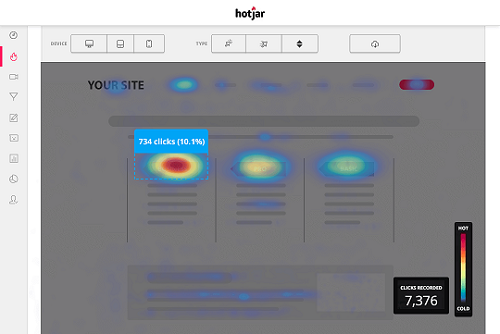How To Market With Empathy
Get In Touch With Your Sensitive Side
In years gone by, empathy and business seemed to be the antithesis of one another. Your wannabe Wolf of Wall Street had little time for pandering to others’ needs when there was a quick buck to be made. But the business world has changed and the nature of marketing has progressed considerably from this flash stereotype, to the point nowadays where empathy, understanding and sensitivity are elemental to good marketing strategies for your business.
It’s not just about showing
that you’re a bunch of good eggs with big hearts; understanding empathy and how
to use it in business marketing is an attentive way of setting your company
apart from the countless others and their dated call to action commands.
What is empathy?
- The intellectual
identification with, and vicarious experiencing of, the feelings and thoughts
and attitudes of another.
The word empathy has
only been in existence for 100 years or so, introduced in 1909 from the German
word ‘einfühlung’, which translates as ‘feeling into’.
Without getting too sentimental about things, advertisers who understand empathy will also understand that it’s about entering the conversations that are already going on in a person’s heart. There, we said it. Corny, but true – if you can translate these feelings into content and marketing, advertising campaigns will appear instantly more seamless and effective. People are won over by emotion and instinctive responses to products and services, so advertising with empathy makes it seem as if you aren’t really advertising anything at all.
Without getting too sentimental about things, advertisers who understand empathy will also understand that it’s about entering the conversations that are already going on in a person’s heart. There, we said it. Corny, but true – if you can translate these feelings into content and marketing, advertising campaigns will appear instantly more seamless and effective. People are won over by emotion and instinctive responses to products and services, so advertising with empathy makes it seem as if you aren’t really advertising anything at all.
Another example is Google’s ad for dad .
Through the father’s viewpoint and the screen of his device’s Google homepage,
we are shown a father recording his emotional connection with his daughter
through technology; it is the pride and joy and humility that we are shown, and
partake in, that causes such an emphatic reaction.
P&G’s ‘Thank you Mum’ for the London
Olympics is another example of empathetic advertising, showing how being a
mother is the ‘best job’ in the Olympics, leading the viewer by the hand through
the day to day rigmarole of loving and devoted mothers raising impossibly cute
kids to be the best they possibly can. Just writing about it is enough to make
us well up. Pass the (P&G) tissues.
All these ads have one
thing in common: indirect selling. It’s not about the quick sell, it’s about
getting customers to buy into your culture as a whole. Obviously these marketing campaigns are selling us things – food and goods, a
web browser, household products – but it never feels like this. Emotive communications
tend to far outperform informative ones.
In 2007 an analysis of 880 campaigns found that emotional ads outsell informational ones by 19%. A follow up study found that out of 1400 campaigns, emotive ads proved even better and performed twice as well as purely informational communications.
Clearly for small
businesses it may be problematic finding the time, ability or means to
experience your customers’ thoughts and feelings; in other words, how are you
meant to empathise with them? Dr James Patell of Stanford University in the US
has come up with an easy formula:
“Our users need a
better way to __________ BECAUSE ___________”
It is the focus on the
‘because’ that will give you real insight into your customers’ motivation and
attitudes, and thus help you create an empathetic marketing strategy for your
business. Your business should aim to be one of those great brands that recognises
its customers’ feelings and validates their humanity – they’ll like you for it.
Recent graduate and now interning as content editor, when she's not writing articles Katie can quite likely be found festival-ing, holiday-ing or reading a book (dedicated English student that she is). Follow her @KatieAtSMF.
Contact us on Twitter, on Facebook, or leave your comments below. To find out about social media training or management why not take a look at our website for more info http://socialmediacambridge.co.uk/.
How To Market With Empathy
![]() Reviewed by Anonymous
on
Friday, August 15, 2014
Rating:
Reviewed by Anonymous
on
Friday, August 15, 2014
Rating:














 Entrepreneur, international speaker on Social Media Marketing. First one in the UK to write and speak in conferences about Twitter as a marketing tool. Consultant to Corporate Companies, Government Organizations, Marketing Managers and Business Owners.
Entrepreneur, international speaker on Social Media Marketing. First one in the UK to write and speak in conferences about Twitter as a marketing tool. Consultant to Corporate Companies, Government Organizations, Marketing Managers and Business Owners. Aspiring novelist with a passion for fantasy and crime thrillers. He hopes to one day drop that 'aspiring' prefix. He started as a writer and soon after he was made Executive Editor and Manager of the team at Social Songbird. A position he held for 5 years.
Aspiring novelist with a passion for fantasy and crime thrillers. He hopes to one day drop that 'aspiring' prefix. He started as a writer and soon after he was made Executive Editor and Manager of the team at Social Songbird. A position he held for 5 years. Musician, audio technician, professional tutor and a Cambridge university English student. Interested in writing, politics and obsessed with reading.
Musician, audio technician, professional tutor and a Cambridge university English student. Interested in writing, politics and obsessed with reading. Recently graduated with a BA in English Literature from the University of Exeter, and he is about to study an MA in Journalism at the University of Sheffield. He is an aspiring journalist and novelist; in his free time he enjoys playing chess, listening to music and taking long walks through nature.
Recently graduated with a BA in English Literature from the University of Exeter, and he is about to study an MA in Journalism at the University of Sheffield. He is an aspiring journalist and novelist; in his free time he enjoys playing chess, listening to music and taking long walks through nature. Lucy is an undergraduate BSc Politics and International Relations student at the London School of Economics and Political Science.
Lucy is an undergraduate BSc Politics and International Relations student at the London School of Economics and Political Science. Anna Coopey is a 4th year UG student in Classics at the University of St Andrews in Scotland. She is a keen writer and researcher on a number of topics, varying from Modern Greek literature to revolutionary theory.
Anna Coopey is a 4th year UG student in Classics at the University of St Andrews in Scotland. She is a keen writer and researcher on a number of topics, varying from Modern Greek literature to revolutionary theory.
